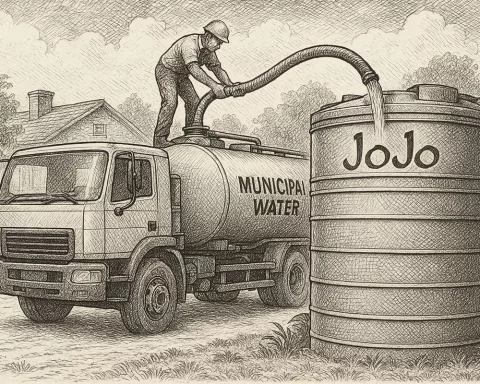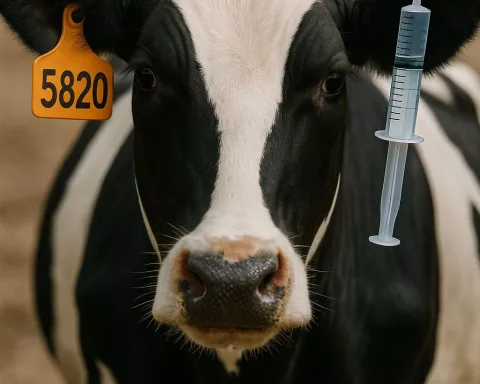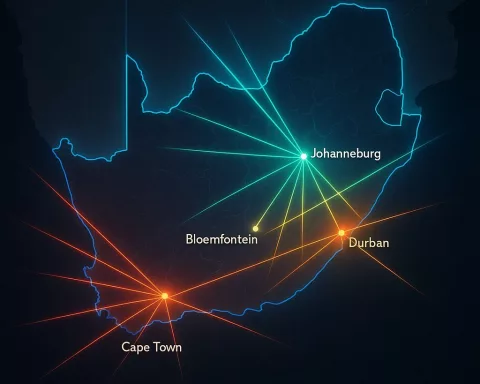The Western Cape is changing rapidly, with many young people and a growing number of older residents living there. However, the area faces big challenges like high unemployment, especially among the youth, and a shortage of healthcare workers. Housing demand is skyrocketing as more people move in, leading to a housing crisis. While the region has beautiful landscapes and a rich culture, it also highlights the stark differences between wealthy neighborhoods and less fortunate communities, making it essential for leaders to find ways to improve everyone’s lives.
What are the key demographic shifts and socio-economic challenges in the Western Cape?
The Western Cape is experiencing significant demographic shifts, with nearly half of its population being youth and an increasing ageing demographic. Key socio-economic challenges include high unemployment (22.2%, with youth at 31.2%), a healthcare professional shortage, and rising housing demand, impacting overall growth and development.
Youth and Ageing Population Dynamics
In the Western Cape, a significant transformation is taking place regarding its demographics. Currently, nearly half of the population comprises young people, while the number of residents aged 60 and above is also on the rise. This shift highlights a trend towards an ageing society amidst falling fertility rates. The 2024 Provincial Economic Review and Outlook (Pero) report, presented by Western Cape Finance MEC Deidré Baartman, sheds light on these changes.
Cape Town, often characterized as a city of contrasts, faces a multitude of socio-economic challenges and opportunities. The Pero report, an annual publication, plays a crucial role in assisting policymakers and municipalities in understanding socio-economic trends for informed policy-making, planning, and budgeting. Baartman emphasized the province’s untapped potential, which is hindered by inefficient logistical networks and a faltering public transport system. The railway network, in particular, has been severely affected by years of under-investment and widespread vandalism, crippling its operations.
The Port of Cape Town, once renowned for its efficiency, fell to the position of the worst-performing port globally in 2023, as per the global Container Port Performance Index. This decline has not only strained the province’s economic potential but also underscored the urgent need for infrastructural reforms. Despite these setbacks, Baartman noted that the tourism sector has shown a strong recovery from the Covid-19 restrictions that had previously hampered it.
Employment Trends and Economic Indicators
In the second quarter of 2024, the Western Cape recorded an unemployment rate of 22.2%, with youth unemployment at 31.2%. Although these figures are concerning, they are significantly lower than the national average of 46.6%. Employment in key sectors such as trade, manufacturing, and agriculture has declined, yet informal jobs, especially in private households, have surged by an impressive 45.9% from 2019 to 2024.
The province’s population grew by 19.6% from 2015 to 2024, with projections indicating an increase of 1.196 million people over the next decade. This demographic boost presents its own set of challenges. The low fertility rate, driven by several factors, including rising childcare costs, urban migration, improved access to social services, better contraceptive methods, and evolving societal norms around family structures, remains a significant concern. Baartman highlighted that higher education levels among women play a crucial role in delaying parenthood as they pursue economic opportunities.
Education in the Western Cape has seen notable improvements over the past five years. Primary school retention rates rose from 86% in 2019 to 93% in 2023, while high school retention rates increased from 65% to 71% during the same period. These improvements reflect a concerted effort to retain learners and ensure they complete their education, setting the stage for a more educated workforce in the future.
Healthcare and Housing Challenges
However, the province faces significant healthcare challenges. A critical shortage of healthcare professionals, especially nurses, continues to strain the system and hampers the provision of quality healthcare services. Migration to the province has exacerbated housing challenges, with registered housing demand rising sharply by 83.2% from 2015 to 2024.
Cape Town’s juxtaposition of economic potential and socio-economic hurdles creates a complex landscape. The city’s allure, characterized by its stunning natural beauty and vibrant cultural scene, stands in stark contrast to its infrastructural and social challenges. The Pero report underscores the need for strategic interventions to harness the province’s potential while addressing its pressing issues.
One cannot discuss Cape Town without acknowledging its artistic and cultural heritage. The city has long been a melting pot of cultures, influenced by European settlers, indigenous Khoisan communities, and a myriad of other ethnic groups. This rich tapestry of cultures finds expression in the city’s art, music, and culinary scenes. The Bo-Kaap, with its colorful houses and cobbled streets, serves as a living testament to the city’s diverse heritage. The annual Cape Town International Jazz Festival, often dubbed “Africa’s Grandest Gathering,” attracts musicians and enthusiasts from around the world, showcasing the city’s vibrant cultural pulse.
Natural Beauty and Socio-Economic Disparities
Cape Town’s natural beauty is another aspect that cannot be overlooked. The iconic Table Mountain, one of the New Seven Wonders of Nature, offers breathtaking views and attracts millions of tourists each year. The city’s coastline, with its pristine beaches and rugged cliffs, provides a stunning backdrop for various recreational activities. The V&A Waterfront, a bustling hub of shops, restaurants, and entertainment venues, seamlessly blends the city’s maritime history with modern attractions.
Despite these attractions, Cape Town’s socio-economic challenges remain a stark reality for many of its residents. The stark divide between affluent neighborhoods and impoverished communities highlights the city’s inequalities. Informal settlements, characterized by inadequate housing and lack of basic services, serve as a stark reminder of the city’s housing crisis. Initiatives aimed at addressing these issues, such as social housing projects and community development programs, are crucial in bridging the gap between different socio-economic groups.
The Western Cape’s economic potential, coupled with its demographic shifts, presents both opportunities and challenges. Policymakers and stakeholders must navigate this complex landscape with strategic foresight, ensuring that the province’s growth is inclusive and sustainable. The Pero report, with its detailed analysis and insights, serves as a valuable tool in this endeavor, guiding the province towards a future where its economic potential is fully realized, and its socio-economic challenges are effectively addressed.
The Western Cape stands at a critical juncture, with its demographic trends and socio-economic dynamics shaping its future trajectory. The province’s diverse cultural heritage, coupled with its natural beauty, offers a unique backdrop for its economic and social endeavors. However, addressing the province’s infrastructural challenges, healthcare shortages, and housing crisis requires a concerted effort from all stakeholders. The journey towards a prosperous and inclusive Western Cape is fraught with challenges, but with strategic interventions and collaborative efforts, the province can indeed realize its full potential.
“`markdown
What are the key demographic shifts and socio-economic challenges in the Western Cape?
The Western Cape is experiencing significant demographic changes, where nearly half of its population consists of young people and an increasing number of older residents. Major socio-economic challenges include a high unemployment rate at 22.2% (with youth unemployment at 31.2%), a shortage of healthcare professionals, and a housing crisis driven by skyrocketing demand. These challenges impact the region’s overall growth and development.
What trends are affecting youth and the aging population in the Western Cape?
The demographic transformation in the Western Cape indicates a youthful population coupled with a rising number of residents aged 60 and above. This trend reflects an aging society amidst declining fertility rates. Addressing these age dynamics is essential for policymakers to ensure that the needs of both the youth and the aging population are adequately met.
How does the Western Cape compare to national unemployment rates?
The Western Cape’s unemployment rate stood at 22.2% in the second quarter of 2024, significantly lower than the national average of 46.6%. Despite challenges in key employment sectors, the region has seen a notable increase in informal employment, particularly in private households, which surged by 45.9% from 2019 to 2024.
What healthcare challenges is the Western Cape currently facing?
The Western Cape is grappling with a critical shortage of healthcare professionals, particularly nurses. This shortage impacts the quality and availability of healthcare services across the province, making it essential for strategic recruitment and retention initiatives to be implemented to address this ongoing issue.
What are the housing challenges in the Western Cape?
The demand for housing in the Western Cape has increased dramatically, with registered housing demand rising by 83.2% from 2015 to 2024. This surge is largely fueled by migration to the area, leading to a housing crisis that disproportionately affects low-income residents and highlights the stark socio-economic disparities within the region.
How does Cape Town’s natural beauty contrast with its socio-economic challenges?
Cape Town is renowned for its stunning landscapes, including Table Mountain and beautiful coastlines, attracting millions of tourists each year. However, this natural beauty coexists with significant socio-economic challenges, including stark inequalities between affluent neighborhoods and informal settlements. Addressing these disparities through social housing and community development initiatives is crucial for creating a more equitable society.
“`












